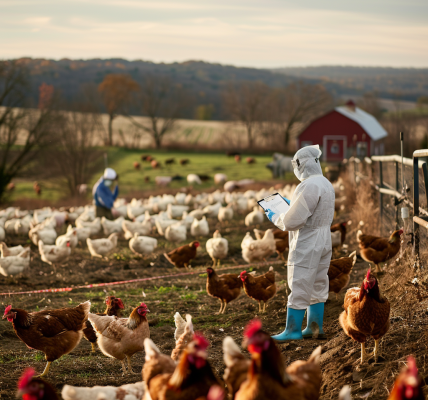Rice University Bioengineers Awarded $3.4 Million to Combat Polio
Rice University’s bioengineering department has received a significant boost in its mission to eradicate polio, thanks to a $3.4 million grant from the Bill & Melinda Gates Foundation. This funding will support innovative research led by bioengineer Kevin McHugh, aimed at integrating polio protection into a combination vaccine that already safeguards against five other critical childhood diseases.
Polio, a highly contagious virus that primarily affects children under the age of five, poses serious health risks, including paralysis and respiratory complications. The ongoing efforts to eliminate this disease are crucial, particularly in low-resource settings where access to vaccines can be limited. McHugh emphasizes that enhancing vaccine accessibility is vital for achieving global health equity and meeting sustainable development goals.
“Combining vaccines has proven effective in reducing the logistical challenges associated with vaccination campaigns, thereby improving healthcare access and vaccination rates in underserved areas,” said McHugh, who serves as an assistant professor of bioengineering and chemistry at Rice. He is also recognized as a Cancer Prevention and Research Institute Scholar.
However, the challenge lies in the potential incompatibility of vaccine components when different vaccines are combined in a single vial. This incompatibility can diminish the overall effectiveness of the vaccines, which poses a significant hurdle in designing combination vaccines.
To address this issue, McHugh’s laboratory has developed a novel approach using poliovirus-like particles (VLPs). These VLPs mimic the virus’s outer shell without containing any viral genetic material, making them a safe option for vaccine development.
The research team will utilize a fabrication platform known as PULSED (Particles Uniformly Liquified and Sealed to Encapsulate Drugs) to create a protective barrier around the polio VLPs. This barrier will effectively separate the VLPs from any incompatible components present in the existing pentavalent vaccine, which protects against diphtheria, tetanus, whooping cough, hepatitis B, and certain strains of bacteria that can lead to pneumonia and meningitis.
“By encapsulating polio VLPs within our PULSED microparticles, we can ensure that they remain isolated from the other components until the body has naturally cleared them from the injection site,” explained McHugh. “We anticipate this clearance could take between two to four days, after which the VLPs will be released, allowing the recipient to fully benefit from all the vaccines given.”
This innovative approach would transform the pentavalent vaccine into an octavalent formulation, offering protection against eight different pathogens. This advancement not only enhances the immunization landscape for children but also represents a significant step forward in the global fight against polio.
As the world continues to grapple with various health challenges, the work being done at Rice University underscores the importance of research and development in the field of bioengineering. The integration of advanced technologies and innovative methodologies holds the potential to revolutionize vaccination strategies, making them more effective and accessible to populations in need.
The collaboration with the Bill & Melinda Gates Foundation highlights a shared commitment to improving health outcomes for children globally. As the project progresses, it stands to make a lasting impact on public health, particularly in regions where polio remains a threat.
In summary, the Rice University bioengineering team, under the leadership of Kevin McHugh, is poised to contribute significantly to the eradication of polio through its groundbreaking research and development of a combination vaccine that aims to protect against multiple diseases simultaneously. This initiative not only addresses immediate health concerns but also sets the stage for future advancements in vaccine technology.





